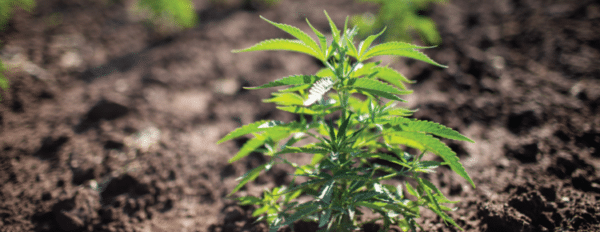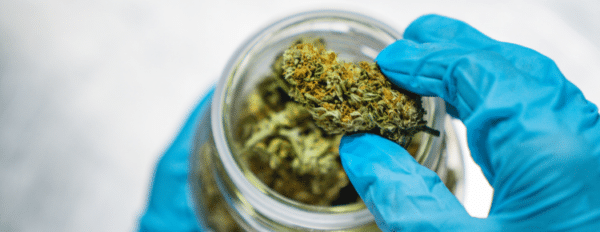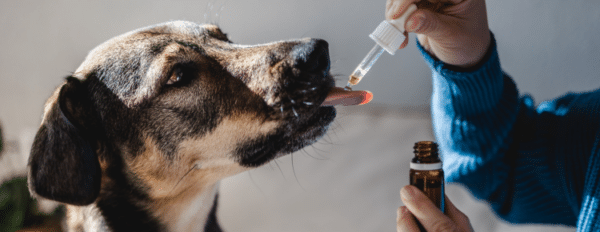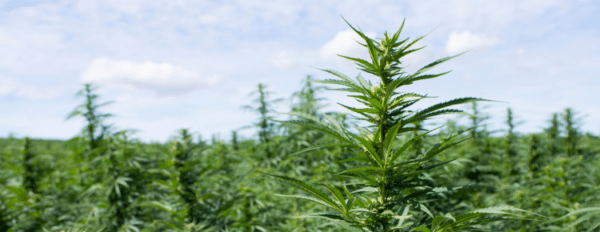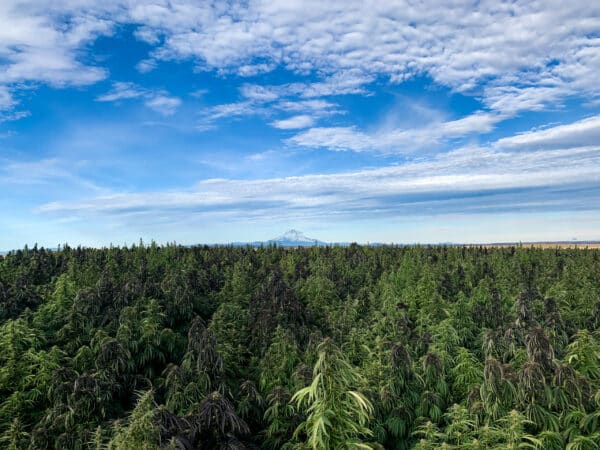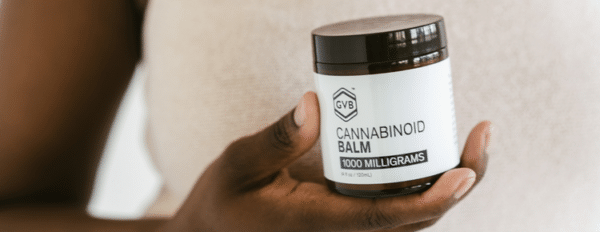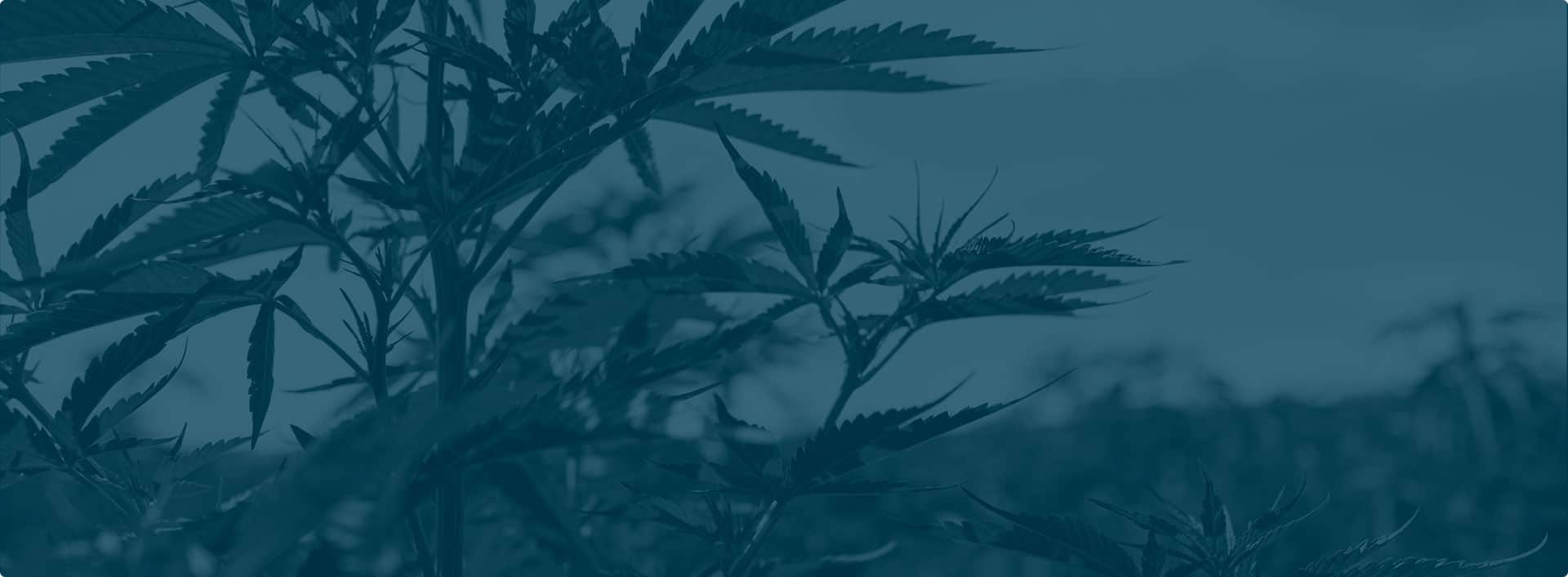Illinois might not be the first state you think of in association with cannabis, but it’s certainly on the map. Adult-use cannabis sales in the state reached $1.5 billion in 2022¹, spurring an overall adoption of cannabinoids, including non-intoxicating compounds like CBD and CBG.
It has a population of nearly 13 million, and it’s home to one of the biggest cities in the United States. Illinois shouldn’t be overlooked when considering locales to start a hemp business, especially with the freedom offered by white labeling. Learn the ins and outs of starting and operating a hemp business in Illinois to determine whether it’s the right path for you.
Illinois cannabinoid legality overview
– Illinois is home to both an adult-use and medical cannabis program
– Cannabis plants can also be grown indoors in Illinois in locked rooms
– Limit of 5 cannabis plants per home
– Illinois was one of the first states to allow hemp cultivation
– The Illinois Hemp Pilot Program² went into effect in 2015
– The Illinois Industrial Hemp Act³ followed in 2018
– This marked the expansion of an already thriving project
– The Illinois Industrial Hemp Program is currently undergoing a major retrofit
– Illinois hemp cultivation applications are filled out online
– Products must be tested through state-approved labs
– Licensing is not required to sell hemp products, only for cultivation and processing
Which cannabinoids can I sell in Illinois?
In Illinois, no distinction is generally made between cannabinoids that are not THC-adjacent, such as CBD, CBG, and CBN. Where things get more complicated is in the case of THC-adjacent compounds like THCA, delta 8, and HHC.
Under federal law, these substances are also generally considered to be “industrial hemp” since they contain less than 0.3% delta-9 tetrahydrocannabinol, the only substance strictly considered to be “marijuana” under federal law anymore.
The massive proliferation of cannabinoids like delta 8 within Illinois has led to significant controversy. Delta 8 became popular in the state originally due to sky-high prices at medical and adult-use dispensaries. Then, public outcry emerged over the regulation and safety of delta 8 products.
Most recently, cannabis reform legislation in Illinois was hamstrung⁴ in 2023 by internal disputes over whether to regulate delta 8 as cannabis or attempt to ban it outright. Our advice to anyone seeking to enter the Illinois cannabinoid market is to steer as far clear of this ongoing debacle as possible by sticking to strictly approved cannabinoids like CBD.
Can I grow hemp in Illinois?
Yes, hemp cultivation is legal in Illinois as it is everywhere else in the United States due to the 2018 Farm Bill. Illinois has, in fact, been leading the way in hemp cultivation since 2015, when the state enacted a pilot hemp horticulture program far before most others.
Illinois then echoed the 2018 Farm Bill by explicitly allowing hemp cultivation with its Industrial Hemp Act. Perhaps more than any other state, Illinois provides legal provisions making it abundantly clear that hemp cultivation is allowed within its borders. Reasonable restrictions do apply, however.
Do you need a license to grow hemp in Illinois?
Yes, proper licensing is required for hemp cultivation in Illinois. Failure to register your hemp cultivation operation with the state could lead to fines and legal injunctions, especially if your crop is confused with marijuana. Illinois makes it reasonably easy to apply for a hemp cultivation license online.
Illinois hemp licensing process
To apply for a hemp cultivation license in Illinois, follow this simple workflow:
1. Navigate to agr.illinois.gov/plants/industrial-hemp
2. Scroll almost all the way to the bottom, or search within the page for “Forms and Applications”
3. Choose the correct form, and click the link
4. You’ll now provide various details through an online form
5. It’s possible to save your progress at any point
6. Pay all relevant fees, and submit the form
7. Await the decision of the Illinois Department of Agriculture
How much does an Illinois hemp license cost?
Compared to other states, the price to acquire an Illinois hemp license is relatively abstruse. We’ll break it down below:
– A $100 application fee is charged for each submitted application
– Grower license fees are as follows:
– 1-year license: $375
– 2-year license: $700
– 3-year license: $1,000
Note how Illinois allows for licensing periods of up to three years, a significant departure from the procedures followed by most other states. A slight price break is given for longer licensing periods to incentivize growers toward three-year licenses.
Is the Illinois climate good for hemp cultivation?
Illinois is an acceptable climate for growing hemp. As part of the Great Plains region and also proximate to the Great Lakes, Illinois experiences extreme seasonal weather, making it ideal for hardier crops like corn.
Cannabis can be grown during one annual cycle in Illinois, limiting output compared to multi-crop climates like California and the Carolina coast. Regardless, cropland is abundant within the state, and transportation throughout is aided by a generally flat landscape, facilitating the shifting of goods from outlying rural areas to urban centers.
How to launch a hemp business in Illinois
If you want to start a hemp business in Illinois, you’ll need to go through a lengthy series of steps. Some of the requirements are natural, but others are imposed by the state of Illinois. Here’s the general process laid out as simply as possible:
1. Acquire hemp cultivation licensing from the Illinois Department of Agriculture
2. This process will entail quite a few steps, such as:
3. Proving you have sufficient commercial space;
4. Demonstrating a comprehensive business plan;
5. Staying in compliance with all certification and regulatory procedures.
6. If you application is approved, you may begin operations
7. It will be necessary to hire employees, acquire farmland, and build out your processing facility
8. Many of these steps can be skipped by acquiring your hemp raw material elsewhere and simply processing it or formulating it into finished products in Illinois
Benefits of white labeling CBD in Illinois
In Illinois as in most other places in the nation, hemp cultivation and processing licenses are separate. If you intend to process hemp but not sell it, both a cultivation and processing license are not required — just a processing license.
Furthermore, if your hemp raw materials arrive in a pre-processed state, you don’t even need a processing license. Simply combine bulk, white-label CBD extract with other ingredients to formulate products, and sell them in Illinois without any licensing whatsoever.
The other choice is to work with the state of Illinois as they hold your hand through a lengthy regulatory process. Decide which approach is best based on the needs of your particular business.
Summary: Should I start a hemp business in Illinois?
Illinois presents its own unique set of opportunities for hemp businesses. While there are challenges, as with any state, a deep understanding of the landscape can position a hemp or cannabinoid business for success in Illinois.
There’s certainly enough private investment to go around. Chicago is an old-money epicenter, and international investment continues to pour into Illinois year after year. CBD and cannabinoids in general are a hot topic in the adult use-saturated Illinois market, making it easy for cannabinoid brands in the state to reach customers.
For hemp cultivation, different regions offer varied advantages. Our advice is to set up shop in Illinois for access to the Chicago market and investment opportunities but to have your cannabinoid ingredients shipped in from a more suitable climate like Oregon.
Illinois hemp business FAQs
Focus in on the details of operating a hemp business in Illinois with this FAQ section:
Is it legal to sell hemp in Illinois?
Yes, it is legal to sell unprocessed or partially processed hemp products in Illinois in accordance with the 2018 Farm Bill and the Illinois Industrial Hemp Act. Any commercial or private entities doing so must first register with the state. These restrictions are not in place for sale of finished products containing CBD or other hemp cannabinoids.
Do you need a license to sell hemp in Illinois?
Yes, it is legal to acquire licensing if selling hemp that was grown or processed in Illinois. This restriction only applies to hemp products that were cultivated or processed in the state in accordance with the Illinois Industrial Hemp Act. Imported hemp products are generally exempt.
Do you need a license to sell CBD in Illinois?
No licensing is required to either buy or sell CBD in the state of Illinois. CBD is not a controlled substance, and as a finished product intended for consumer sale, it does not fall under the state’s definition of a hemp product cultivated or processed in Illinois. Individuals who wish to sell finished CBD products in Illinois should understand that no licensing from the state is required whatsoever aside from any general business licensing that would otherwise apply.
How much is a hemp license in Illinois?
In Illinois, acquiring a hemp cultivation or processing license can cost anywhere between $475 and $1,100. There is a $100 application fee for all hemp applications, and license pricing varies depending on the duration of the licensing window.
Sources
1. Adult use cannabis sales figures released for April 2023. (n.d.). https://idfpr.illinois.gov/news/2023/auc-sales-figures-april-2023.html
2. Illinois General Assembly – Illinois compiled statutes. (n.d.). https://www.ilga.gov/legislation/ilcs/fulltext.asp?DocName=072005500K15.2
3. 505 ILCS 89/ Industrial Hemp Act. (n.d.). https://www.ilga.gov/legislation/ilcs/ilcs3.asp?ActID=3910&ChapterID=40
4. Thomas, S. S. (2023). Delta-8 Dispute Gets In Way of Illinois Pot Reform. High Times. https://hightimes.com/news/delta-8-dispute-gets-in-way-of-illinois-pot-reform/


